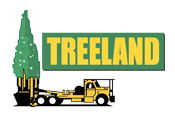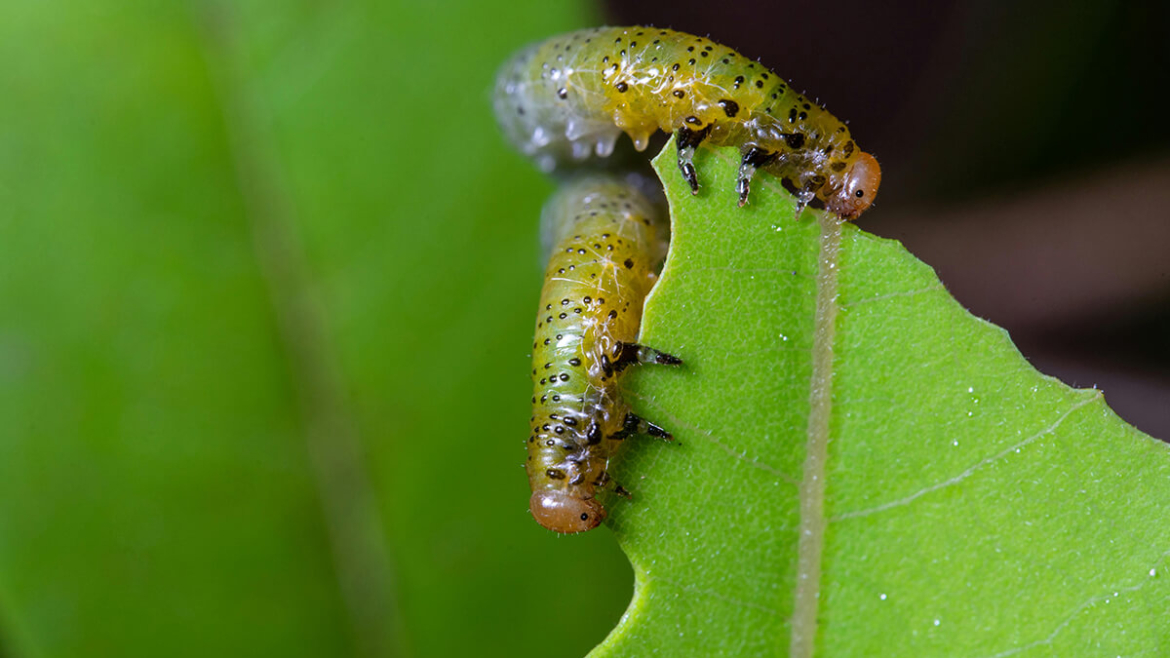Spring’s arrival heralds a season of vibrant renewal, with buds bursting into leaves and landscapes transforming into lush havens. However, this period of growth also awakens a host of unwelcome guests: pests eager to feast on your precious trees. A vigilant spring pest patrol is essential to ensure the health and longevity of your trees.
Let’s look into the common threats facing trees during spring, as well as practical strategies for prevention and treatment.
The Spring Awakening: A Pest’s Paradise
As temperatures rise, insects and diseases emerge from their winter dormancy, seeking sustenance and breeding grounds. Young, tender leaves and new growth are particularly vulnerable, making spring a critical time for proactive tree care. Understanding the common threats is the first step in protecting your landscape.
Common Spring Tree Pests and Diseases
Aphids
These tiny, sap-sucking insects are prolific breeders, quickly forming large colonies that can weaken trees. They target new growth, causing leaves to curl, yellow, and drop. Aphids also excrete honeydew, a sticky substance that attracts sooty mold.
Caterpillars
Numerous caterpillar species, such as tent caterpillars and gypsy moths, emerge in spring, voraciously consuming leaves. Defoliation can severely stress trees, making them susceptible to other problems.
Scale Insects
These insects attach themselves to branches and leaves, feeding on sap. They are often difficult to detect due to their camouflage, but their presence can lead to stunted growth and leaf discoloration.
Borers
These insects, including emerald ash borers and bronze birch borers, lay eggs on or in the bark. Larvae tunnel through the wood, disrupting nutrient and water flow, potentially killing the tree.
Spider Mites
Though technically arachnids, spider mites are common spring pests. They feed on leaf tissue, causing stippling and discoloration. Heavy infestations can lead to premature leaf drop.
Fungal Diseases
Spring’s damp conditions favor fungal diseases like powdery mildew, anthracnose, and apple scab. These diseases can cause leaf spots, blotches, and premature defoliation.
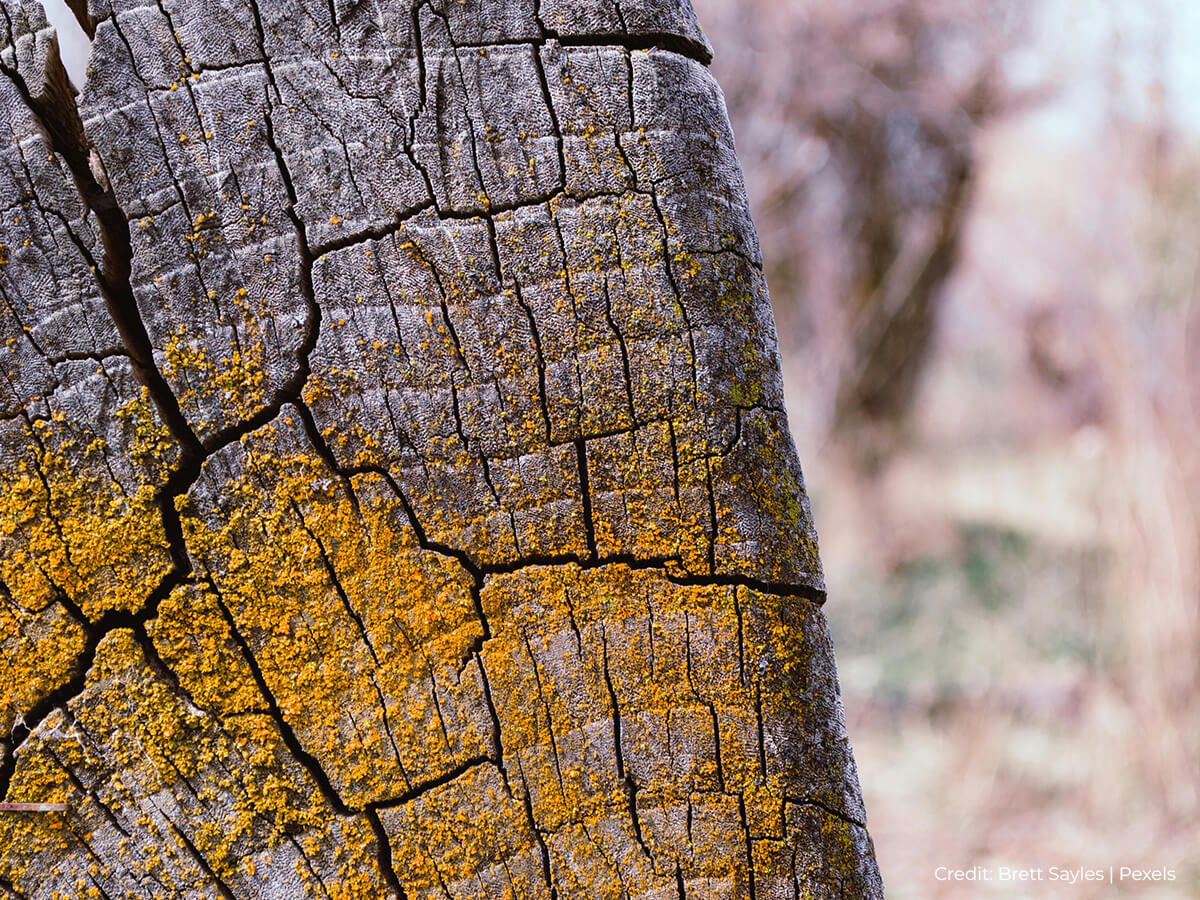
Identifying Pest and Disease Problems
Early detection is crucial for effective pest control. Regularly inspect your trees for signs of infestation or disease, including:
- Leaf discoloration or distortion
- Holes or chewed leaves
- Sticky honeydew or sooty mold
- Visible insects or eggs
- Dieback or dead branches
- Fungal growths or spots
Preventative Measures: A Strong Defense
A healthy tree is more resistant to pests and diseases. Implementing preventative measures can significantly reduce the risk of infestation:
- Proper watering and fertilization. Ensure your trees receive adequate water, especially during dry periods. Fertilize trees according to their specific needs, promoting healthy growth.
- Mulching. Apply a layer of mulch around the base of trees to retain moisture, regulate soil temperature, and suppress weeds.
- Pruning. Regularly prune trees to remove dead, damaged, or diseased branches, improving air circulation and sunlight penetration.
- Sanitation. Remove fallen leaves, branches, and other debris that can harbor pests and diseases.
- Regular inspections. Conduct frequent inspections, particularly during spring, to detect early signs of infestation or disease.
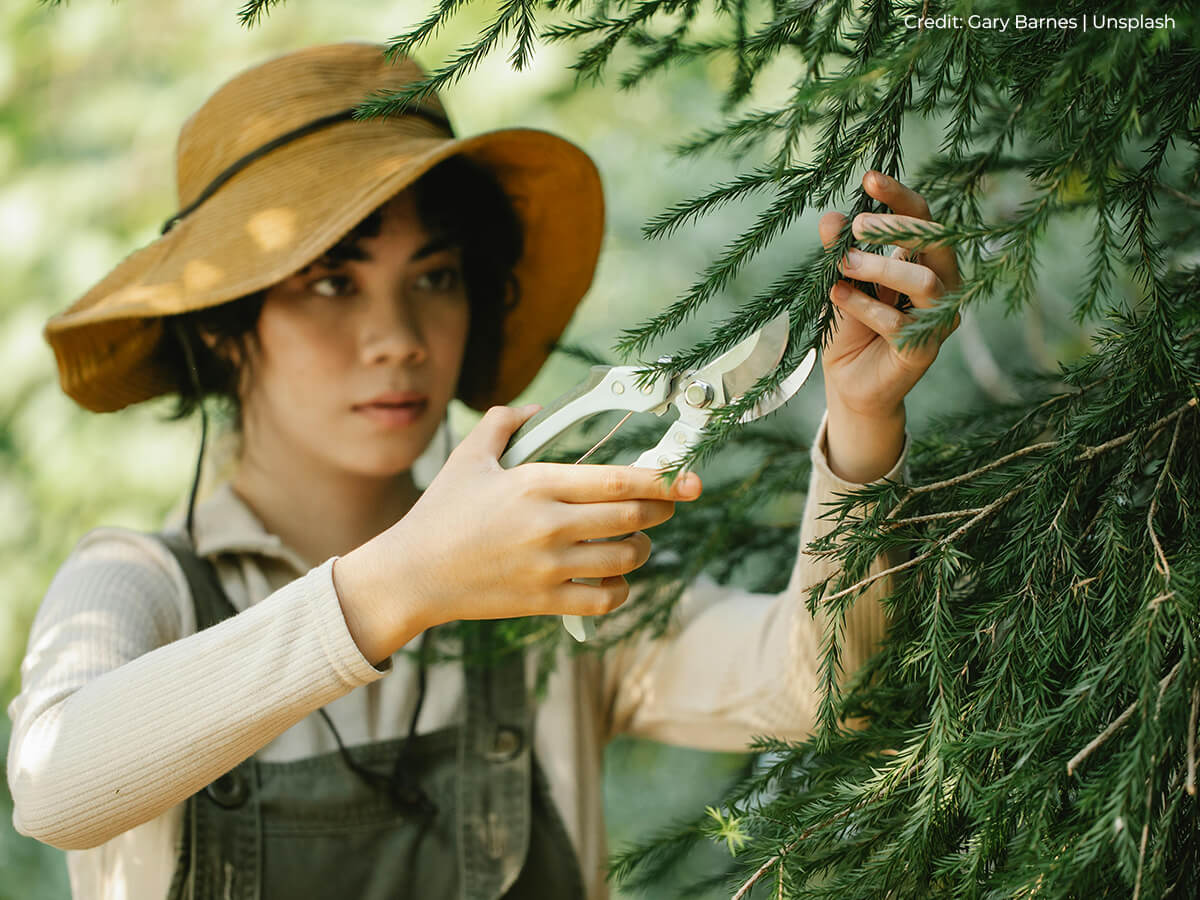
Treatment Options for Existing Problems
If you discover pests or diseases on your trees, prompt treatment is essential.
- Integrated Pest Management (IPM). IPM is a holistic approach that combines various strategies, including cultural practices, biological control, and chemical applications, to minimize pest populations while protecting the environment. As much as possible, aim to employ safe and effective pest-control methods.
- Biological control. Introduce natural predators or parasites to control pest populations. Ladybugs, for example, are effective aphid predators.
- Horticultural oils and soaps. These natural products can suffocate or disrupt the life cycle of many soft-bodied insects, such as aphids and spider mites.
- Insecticides. If necessary, use insecticides to control severe infestations. Choose products that are specific to the target pest and follow label instructions carefully. As much as possible also, consider earth-friendly options.
- Fungicides. Apply fungicides to control fungal diseases. Choose products that are appropriate for the specific disease and follow label instructions.
Choosing Pest-Resistant Trees
When planning your landscape, consider selecting tree species that are resistant to common pests and diseases in your area. This will reduce the need for chemical treatments and promote a healthy ecosystem.
Selecting the right trees for your landscape takes into account not just aesthetics but is a critical component of preventative pest control, especially during the vulnerable spring season.
By choosing species well-suited to your local climate and resistant to common pests and diseases, you create a foundation for a resilient and thriving landscape.
Let’s dive deeper.
1. Understanding Regional Susceptibilities
- Local pest and disease pressures. Every region has its unique set of pest and disease challenges. In Toronto, for example, emerald ash borers, gypsy moths, and certain fungal diseases are prevalent. Researching which pests and diseases are common in your specific area is the first step.
- Climate adaptation. Trees adapted to your climate are naturally stronger and more resistant to stress. Stress weakens trees, making them more susceptible to infestations and diseases. Consider factors like temperature extremes, rainfall patterns, and soil conditions.
- Native vs. nonnative species. Native trees have evolved alongside local pests and diseases, often developing natural defenses. While non-native species can add diversity, they may be more vulnerable to local threats.
2. Selecting Resistant Varieties
- Disease-resistant cultivars. Many nurseries offer cultivars specifically bred for disease resistance. For example, certain maple varieties are more resistant to verticillium wilt.
- Insect-resistant species. Some tree species are naturally less attractive to certain pests. For instance, oak trees are generally more resistant to aphids than some other species.
- Diversity in planting. Planting a variety of tree species reduces the risk of widespread devastation from a single pest or disease. If one species is affected, others may remain healthy.
3. Considerations for Spring Vulnerability
- Timing of bud break. Trees that break bud early in spring may be more vulnerable to late frosts and early-season pests. Selecting species with a later bud break can mitigate this risk.
- Leaf texture and composition. Some pests prefer tender, young leaves. Choosing trees with thicker, more mature leaves or those that develop their leaves later in the season can discourage certain pests.
- Bark characteristics. Borers target specific tree species based on bark characteristics. Selecting trees with bark that is less attractive to borers can reduce the risk of infestation.
4. Sourcing Healthy Trees
- Reputable nurseries. Purchase trees from reputable nurseries that prioritize healthy stock. They can provide valuable information about pest and disease resistance.
- Inspection before purchase. Carefully inspect trees for signs of pests or diseases before purchasing. Look for healthy foliage, strong branching, and a vigorous root system.
- Local suppliers. Local nurseries often have a better understanding of the trees that thrive in the region and are more likely to have stock that is acclimated to the local climate. As mentioned previously, when searching trees for sale in Toronto, a local supplier like Treeland can be a great option.
5. Long-Term Landscape Planning
- Mature tree size. Consider the mature size of the tree and its suitability for your landscape. Overcrowding can stress trees and make them more vulnerable to pests and diseases.
- Sunlight and soil requirements. Choose trees that are compatible with the sunlight and soil conditions in your landscape. Healthy trees are better equipped to withstand pest and disease pressures.
- Maintenance requirements. Consider the long-term maintenance requirements of the tree, including pruning, watering, and fertilization. Trees that require less maintenance are often more resilient.
Example scenarios
- If you live in an area prone to emerald ash borers, avoid planting ash trees.
- If powdery mildew is a common problem, select trees that are resistant to this fungal disease, such as certain crabapple varieties.
- If you have a damp area, selecting trees that prefer those conditions will keep the tree healthier, and therefore less likely to fall victim to diseases.
Spring Pest Patrol Checklist
- Inspect trees regularly for signs of pests and diseases.
- Water and fertilize trees appropriately.
- Mulch around the base of trees.
- Prune trees to remove dead or diseased branches.
- Remove fallen leaves and debris.
- Use IPM strategies for pest control.
- Consider biological control or horticultural oils.
- Use insecticides or fungicides only when necessary.
- Consult a certified arborist for complex problems.
Pro tip. For complex infestations or diseases, or if you are unsure about treatment options, consult a certified arborist. They have the expertise to diagnose problems and recommend appropriate solutions.
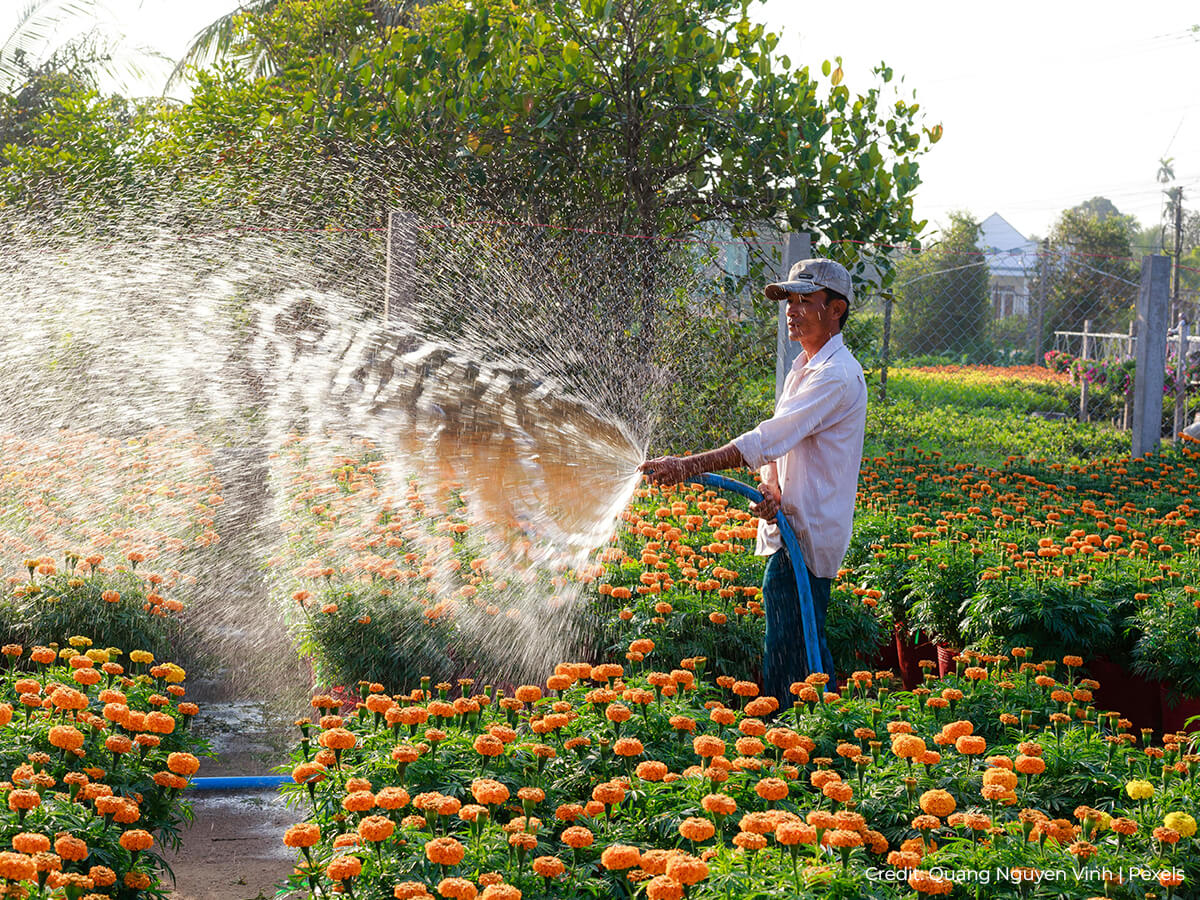
With these factors carefully considered, you can equip yourself to create a landscape that is not only beautiful but also resilient to spring pests and diseases. This proactive approach to tree selection will minimize the need for chemical interventions and promote a healthy, thriving ecosystem.
Consider also sourcing your trees from reputable nurseries. We at Caledon Treeland can provide expert advice on selecting the right trees for your specific needs, along with a variety of trees for sale in Toronto and other areas. Contact us at (905) 880-1828 or via treeland@treeland.ca.
